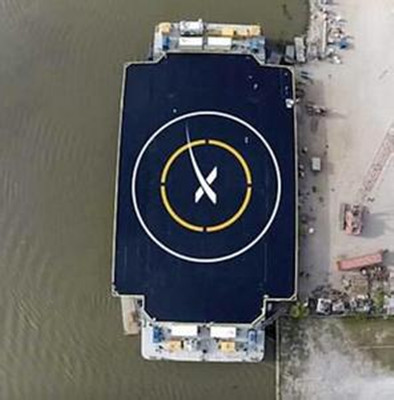Space,the final frontier, is also the most expensive one.
太空—这片最后未经开拓的领域,同样也最为烧钱。
Reaching Earth orbit typically costs between ten-to twenty-thousand-dollars per kilogram.
通常到达地球轨道的成本是每公斤10万至20万美元。
That's because rocketry is the only form of transportation where you throw away your vehicle once you've reached your destination.
这是因为火箭是唯一的交通工具,而且一旦抵达目的地就会废弃。
But that might change as soon as January of next year, when Space Exploration Technologies, also known as SpaceX, plans to launch a rocket into space, then bring the rocket's first stage back for a precision landing.
但是也许明年1月这种情况会有所改变,一家名为SpaceX的空间探索科技公司计划将火箭发射到太空,而后使火箭第一级进行精准着陆。

After launching a payload on a resupply mission to the International Space Station,Space X's Falcon 9 first stage will deploy hypersonic stabilizing fins and fire its engines four times, steering itself to an upright touchdown on a robotic barge floating in the Atlantic Ocean.
将再补给任务的有效载荷发射至国际空间站后,SpaceX的猎鹰9号运载火箭第一级将展开高超音速稳定翼并且进行4次引擎点火,而后转为自动操作在大西洋上的机器驳船垂直降落。
Think of a 14-story building moving faster than a kilometer per second.
想象一下一个14层的高楼时速每秒1公里移动的情景。
And now imagine slowing it down, balancing it on a jet of rocket exhaust and landing it with an accuracy of 10 meters on a target smaller than a football field.
现在再想象让它慢下来,通过火箭排气保持其平衡,最后10米内精准着陆在一个比足球场还小的地方。
It won't be easy—company representatives only give the precision landing 50–50 odds.
显然这绝非易事—而公司代表认为此次精准着陆成功率只有一半。
But if successful, SpaceX's audacious test could soon lead to cheaper, fully reusable rockets that make the final frontier not quite so financially challenging.
但如果能够成功,SpaceX公司这次大胆的实验很快将带来造价更为低廉、完全可重复使用的火箭,使这片最后的未开拓领域在经济方面不再受到如此多困扰。













